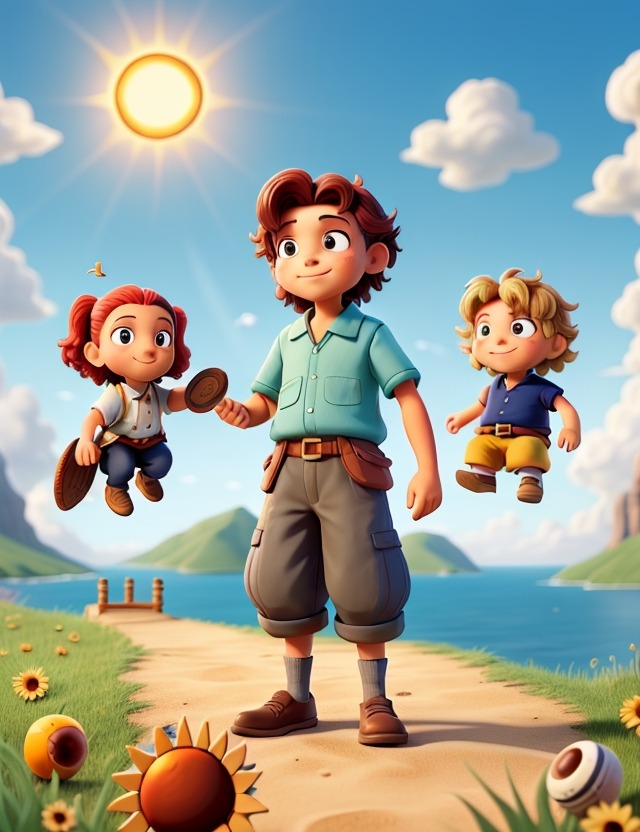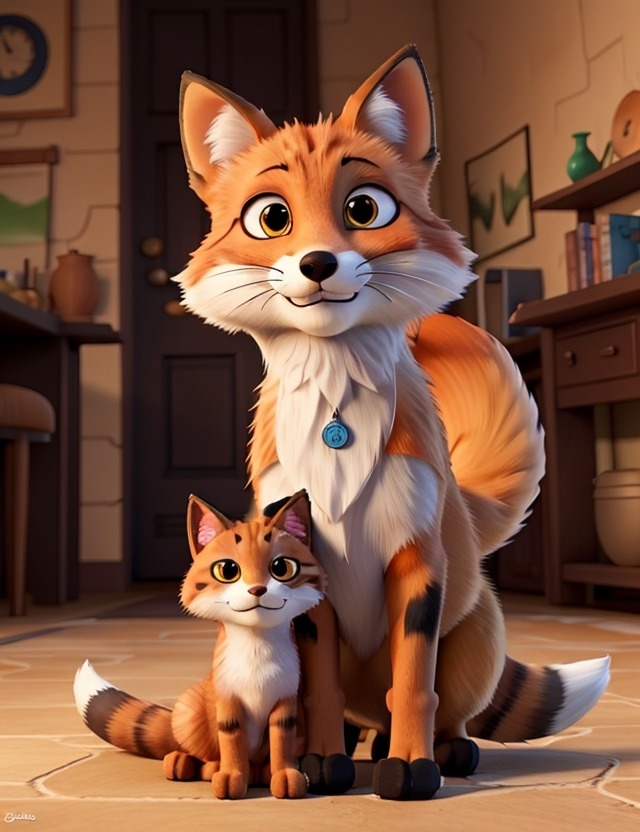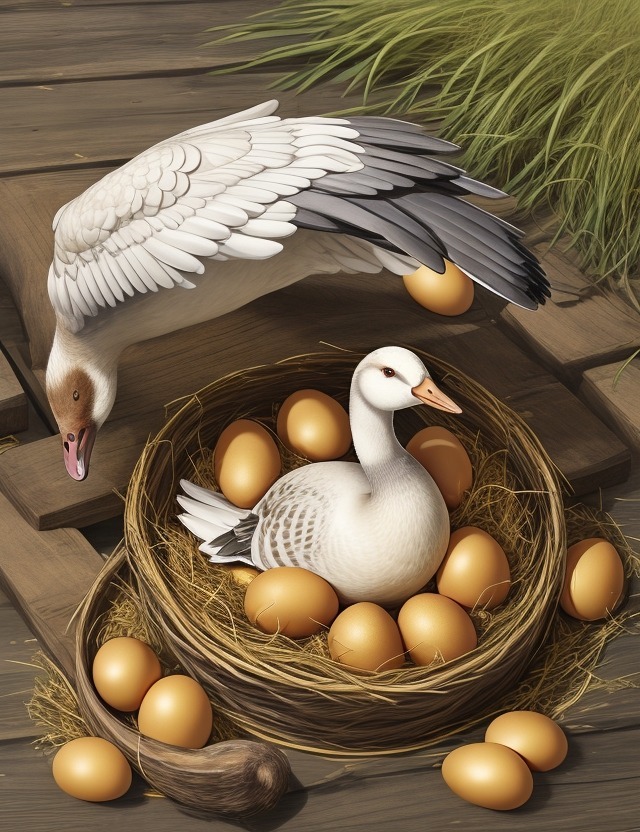Fable is a genre of short stories that typically feature animals, without animals or inanimate objects as characters, conveying moral lessons and teachings through their narratives. These tales have been around for centuries and have remained a popular genre of short stories for kids due to several reasons.
First and foremost, fables appeal to children’s imagination by using anthropomorphic characters. By personifying animals or objects, fables create a fantastical world that captivates children’s minds and transports them into a different realm. This imaginative aspect allows kids to engage with the story on a deeper level, making it more memorable and impactful.
Moreover, fables ignite children’s curiosity as they often present moral dilemmas and conflict resolution strategies. These stories present characters facing challenges and making choices that ultimately lead to a moral lesson. This prompts children to question and ponder the characters’ decisions, encouraging critical thinking and reasoning skills. Fables teach kids lessons about honesty, kindness, humility, and other moral values, challenging them to reflect on their own behavior and actions.
Lastly, fables evoke emotions in children by employing storytelling techniques such as suspense, humor, and empathy. They create a connection between children and the characters, enabling kids to emotionally invest in the story. This emotional engagement further reinforces the moral lessons, making them more relatable and impactful for children.
Fable Short Stories Genre: Authors
Some famous authors of the genre of fable include Aesop, Jean de La Fontaine, and George Orwell.
1. Aesop:
Aesop is considered the father of the fable genre and is one of the most famed fable writers. He lived in ancient Greece and his fables were primarily oral traditions. His fables featured anthropomorphic animals teaching moral lessons, often with a twist at the end. Fables of Aesop have been influential in shaping the genre and they continue to be widely read today by Aesop fables short stories pdf. Some of his most notable works include “The Tortoise and the Hare,” “The Boy Who Cried Wolf,” and “The Lion and the Mouse.”
2. Jean de La Fontaine:
La Fontaine was a 17th-century French poet and writer who is famous for his collection of fables. He expanded upon Aesop’s tradition by adding his own style, humor, and moral nuances. La Fontaine’s fables were written in verse, making them more accessible and enjoyable for readers. His most notable works include “The Crow and the Fox,” “The Ant and the Grasshopper,” and “The Tortoise and the Two Ducks.” La Fontaine’s fables have become classics in the genre and his influence can be seen in subsequent fable writers.
3. George Orwell:
Though mostly known for his dystopian novels like “1984” and “Animal Farm,” George Orwell also contributed to the genre of fables. His collection of animal fables called “Aesop’s Fables” was published posthumously and it showcases his political and social commentary. Orwell’s fables critique totalitarianism, censorship, and corruption in society, reflecting his larger body of work. Some notable fables by Orwell include “The Lion and the Unicorn,” “The Cock and the Pearl,” and “The Cat and The Fiddle.”
These authors have greatly influenced the genre of fables and left significant impacts on other writers and readers. Aesop’s fables laid the foundation for the genre and his timeless moral lessons continue to inspire new generations of writers. La Fontaine’s poetic style and mastery of storytelling became a reference point for subsequent fable authors. Orwell’s fables introduced a political and social dimension to the genre, challenging readers to critically analyze society. Overall, these authors have shaped the genre of fables and their works continue to be widely read, studied, and admired.
Fable Short Stories Genre: Examples
Short stories of fable is a literary genre that comprises narratives often featuring animals or inanimate objects as characters and fiction. These stories typically convey moral lessons or truths, making use of symbolism, allegory, and anthropomorphism. Here, I will discuss three of the best and most representative examples of the fable genre: “The Tortoise and the Hare,” “The Fox and the Grapes,” and “The Lion and the Mouse.”
Which story is an example of a fable?
1. “The Tortoise and the Hare” by Aesop:
In this well-known fable, the hare challenges the tortoise to a race and arrogantly takes an early lead. However, being overconfident, the hare becomes complacent and takes a nap during the race. The slow and steady tortoise, despite its slowness, wins the race while the hare slumbers. The moral lesson here is the value of persistence and the dangers of cockiness.
This fable illustrates a central characteristic of the genre: the use of animals as personified characters to convey important life lessons easily understandable to both children and adults. The appeal of this fable lies in its simplicity and relatability, as it emphasizes that hard work and consistency can lead to success.
2. “The Fox and the Grapes” by Aesop:
“The Fox and the Grapes” tells the story of a fox that tries to reach a bunch of grapes hanging high above. Despite numerous attempts, the fox fails to grab the grapes and, disappointed, concludes that they must not be worth having. The moral of this fable centers on sour grapes, symbolizing the tendency for humans to belittle and dismiss what they desire but cannot attain.
This fable demonstrates the genre’s inclusion of symbolism and allegory. It reveals the fable’s ability to highlight human behavior and attitudes, serving as a reflection of society. The fable focuses on how people often downplay or devalue things they cannot acquire effortlessly, urging readers to avoid sour grapes mentality.
3. “The Lion and the Mouse” by Aesop:
“The Lion and the Mouse” is a fable that narrates the story of a ferocious lion who spares the life of a tiny mouse. Later, when the lion is trapped by hunters, the mouse repays the favor by gnawing through the ropes to free the lion. The moral presented here is the notion that even the smallest beings can prove helpful or influential.
This fable exemplifies the genre’s appeal as it promotes empathy and kindness, emphasizing the interconnectedness and mutual dependence between creatures. It showcases the genre’s relevance by conveying that acts of goodwill, regardless of the difference in stature or strength, can be vital in various circumstances.
These three fables are considered among the best and most representative examples of the genre because they embody the core elements of fables: storytelling using animals or objects, profound yet easily understandable moral lessons, and the exploration of human behavior. They reflect the genre’s appeal by simplifying complex human experiences and dilemmas through the use of relatable characters and situations. Additionally, these fables exhibit the genre’s diversity by tackling different moral themes and displaying different character archetypes. Overall, fables remain relevant as they continue to teach valuable life lessons, appeal to a broad audience, and provide insights into human nature.
Fable with Pictures
Fable Short Stories Genre : History
The genre of fable emerged thousands of years ago, in various regions around the world. The origins of fables can be traced back to ancient civilizations such as Egypt, India, Greece, and Sumer. Fables were initially passed down orally, gradually being recorded in written form.
Historically, fables served as moral or didactic tales, teaching lessons about human behavior and society. These stories typically featured animals or mythical creatures with human characteristics, presenting situations that mirrored human dilemmas and virtues.
Fable Short Stories: Cultural Impact
Culturally, fables were heavily influenced by the societies in which they originated. For example, ancient Greek fables were influenced by the philosophical and moral ideas of thinkers like Aesop. Similarly, Indian fables drew inspiration from Hindu and Buddhist beliefs, incorporating themes of karma and reincarnation.
Some of the pioneers and innovators of the fable genre include Aesop, a legendary figure from ancient Greece, who is credited with creating numerous fables that have endured over time. His fables, such as “The Tortoise and the Hare,” continue to be widely recognized and retold today. Other notable contributors to the genre include Panchatantra, an ancient Indian collection of fables, and Jean de La Fontaine, a French writer known for his extensive retelling and adaptation of Aesop’s fables.
Landmark works in the genre of fables include Aesop’s Fables, which were compiled and attributed to him during the 6th century BCE. The Panchatantra, an Indian collection of animal fables, dates back to the 3rd century BCE and has had a significant influence on fable traditions worldwide. Jean de La Fontaine’s “Fables,” published in the 17th century, became highly popular and translated into various languages, contributing to the popularity and dissemination of fables across Europe.
Over time, fables have evolved and adapted to different literary movements and cultural contexts. Modern fables continue to be written and remain popular for their ability to convey moral lessons in a captivating and accessible manner.
Fable Short Stories Genre: Characteristics
The genre of fable is a type of short fictional narrative that often employs animals or inanimate objects as characters and conveys a moral lesson or message. Fables are characterized by their brevity, simplicity, and use of anthropomorphism.
Key Characteristics
- Language in fables is typically concise and straightforward, helping to convey the moral message in a clear and accessible manner. The plot follows a linear structure with a recognizable pattern, often involving a problem or conflict that needs resolution. Fables commonly feature a clear and distinct moral that is explicitly stated at the end.
- Characters in fables are typically anthropomorphized animals or objects, which represent specific human qualities or traits. These characters are often archetypal, serving as symbolic representations of various virtues, vices, or types of behavior.
- Setting in fables is often minimalistic and is secondary to the moral lesson being conveyed. The stories tend to be set in generic locations or natural environments that serve as a backdrop to the moral message.
- The tone of fables is generally didactic and instructive, aiming to impart a lesson or moral. Fables often employ allegory or metaphor to illustrate moral truths and offer guidance on how to behave or make decisions.
- Typical themes in fables include honesty, bravery, greed, kindness, and the consequences of one’s actions. Fables commonly address universal human values and ethical dilemmas and often caution against negative behaviors or vices.
Fables relate to the interests and needs of kids by providing them with enjoyable stories that carry important lessons in a format they can easily understand. The simplicity and brevity of fables cater to children’s shorter attention spans while the use of animal or object characters engages their imagination. Fables also allow children to explore moral concepts and develop their understanding of right and wrong, providing guidance on how to navigate the complexities of life.
Fable Short Stories Genre: Benefits
Reading fables, a genre of literature, offers numerous benefits for kids. Fables are short stories that typically feature animals or inanimate objects with human-like qualities, conveying moral lessons or life principles. Here’s how reading fables enhances various skills and encourages personal growth:
1. Reading Comprehension:
Fables often involve complex plots and character interactions, requiring kids to focus on understanding the story’s elements and moral message. Analyzing the characters’ actions and motivations helps improve children’s comprehension skills.
2. Vocabulary:
Fables introduce children to new words and phrases, expanding their vocabulary. These stories often use descriptive language and metaphors, encouraging kids to explore and comprehend different word meanings in a meaningful context.
3. Critical Thinking:
Fables present moral dilemmas and lessons, prompting children to think critically about the characters’ decisions and their consequences. Kids learn to evaluate various perspectives, make connections between the story and real-life situations, and apply critical thinking skills to moral judgments.
4. Broadened Horizons:
Fables often incorporate cultural elements, allowing children to explore the values and traditions of different societies. By reading fables from various cultures, kids gain insights into diverse perspectives, broadening their horizons and fostering empathy and understanding.
5. Cultural Enrichment:
Fables are deeply rooted in cultural traditions, myths, and folklore. By exploring different fables, kids gain a deeper appreciation for cultural diversity, heritage, and storytelling practices from around the world, enriching their own cultural knowledge.
6. Fostered Creativity:
Fables often require readers to imagine animals or objects with human characteristics. This stimulates children’s creativity by encouraging them to visualize the story’s events and characters, inspiring artistic expression and imaginative thinking.
7. Motivation and Empowerment:
Fables typically incorporate life lessons or morals that encourage positive behaviors, such as honesty, determination, or kindness. These stories motivate and empower children by showing them the impact of their actions and illustrating the potential rewards of virtuous behavior.
8. Pursuit of Goals and Dreams:
Many fables feature characters who overcome challenges to achieve their goals or dreams. By reading about these characters’ journeys, children are inspired to persevere through obstacles and pursue their own ambitions, fostering a sense of self-motivation and determination.
Fable Short Stories Genre: Tips
Reading Fables:
- 1. Familiarize yourself with the characteristics of fables: Fables are short fictional stories that often feature animals or inanimate objects acting like humans. They typically convey a moral lesson or teaching. By understanding these elements, you can better analyze and interpret the messages and undertones of each fable.
- 2. Explore various fable collections: Expand your knowledge of fables by reading different collections such as Aesop’s Fables, La Fontaine’s Fables, or folktales from different cultures. This will expose you to a wide range of storytelling styles and themes present in fables.
- 3. Analyze the moral lessons: Fables are renowned for their moral teachings. Pay close attention to the moral at the end of each fable and reflect on its significance. Consider discussing the moral with others to gain different perspectives and insights.
- 4. Discuss the symbolism and allegory: Often, fables use symbolism and allegory to convey deeper meanings. Encourage discussions on the symbolic representation of characters or objects in the fables, leading to a richer understanding of the story and its message.
Writing Fable Short Stories:
- 1. Choose a moral or lesson: Befor writing fable short stories, determine the moral or lesson you wish to convey. This will provide a foundation for your story and ensure a clear message by having fable story ideas.
- 2. Create memorable characters: Make your characters relatable by attributing human-like traits to animals or objects. Each character should possess distinct qualities that enhance the fable’s narrative and moral lesson.
- 3. Keep it concise: Fables are short and to the point. Practice conveying your story and moral within a limited word count, using strong and concise language. This exercise will improve your storytelling skills and help convey your message effectively.
- 4. Edit and revise: Like any form of writing, editing and revising are crucial for refining your fable. Read it aloud to ensure a smooth flow and check for cohesion between the story and moral. Seek feedback from others to help improve your writing technique.
Teaching Fables:
- 1. Introduce fables’ characteristics: Begin by explaining the defining features of fables, such as their short length, moral lessons, and use of animals or objects as characters. Provide examples to engage students’ interest.
- 2. Analyze fables together: Guide students through the process of analyzing various fables. Encourage class discussions about the moral lessons, symbolism, and allegory present in the stories. This allows students to sharpen their critical thinking skills and deepen their understanding.
- 3. Compare different fables: Engage students by comparing and contrasting fables from different cultural backgrounds or authors. Discuss the variations in moral lessons, characters, and storytelling techniques. This broadens students’ perspectives and encourages cultural appreciation.
- 4. Encourage creative writing: Prompt students to write their own fables, focusing on imparting moral teachings. Provide feedback on their writing, guiding them to improve descriptive language, character development, and effective moral messages.
Using Fables to Engage, Challenge, and Support Children:
- 1. Discuss real-life applications: Relate the moral lessons in fables to the students’ everyday experiences for example using fable 7 little words. Encourage discussions on how the lessons can be applied to their own lives, teaching them valuable values and critical thinking skills.
- 2. Present multiple perspectives: Show fables with conflicting moral lessons or different characters’ perspectives. This challenges students to examine the complexities of ethical decision-making and develops empathy.
- 3. Incorporate artistic expression: Encourage students to create illustrations, comic strips, or even dramatic reenactments of their favorite fables. This allows them to engage with the genre on a visual and kinesthetic level and promotes creativity.
- 4. Utilize online resources: Utilize digital platforms or websites that offer interactive fables, quizzes, and activities. These resources can add an element of excitement and gamification, making the learning experience enjoyable and engaging for students.
Difference between a Folktale and a Fable
Folktales and fables are two types of stories that have some similarities but also some differences. A folktale is a story that originates in popular culture, typically passed on by word of mouth. It can include material from other sources such as history and religion. Folktales can have different types of characters, including humans, animals, demons, gods, plants, etc. They can also teach a moral lesson to their listeners, but not all folktales have lessons .
On the other hand, a fable is a short story, typically with animals as characters, conveying a moral. Fables are a particular type of story in which animals, plants, mythical creatures, or other similar characters are given human qualities so that they act like humans. This quality of attributing human qualities to animals is known as anthropomorphism. Fables often deliver a moral lesson, which may be explicitly stated at the end of the fable. Some fables have known authors, while there are some others who have unknown origins.
The main difference between folktale and fable is that fables always teach a moral lesson to the readers, but not all folktales have a moral. Folktales can include material from other sources such as history and religion, while fables are usually uniform.



